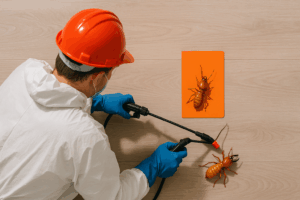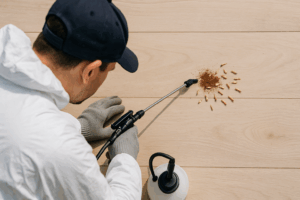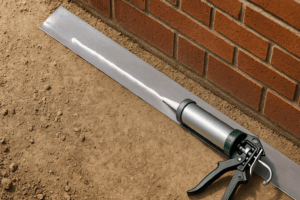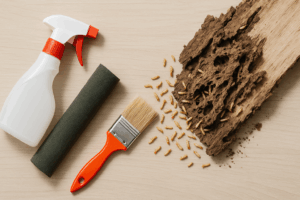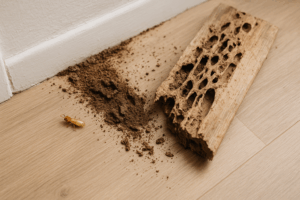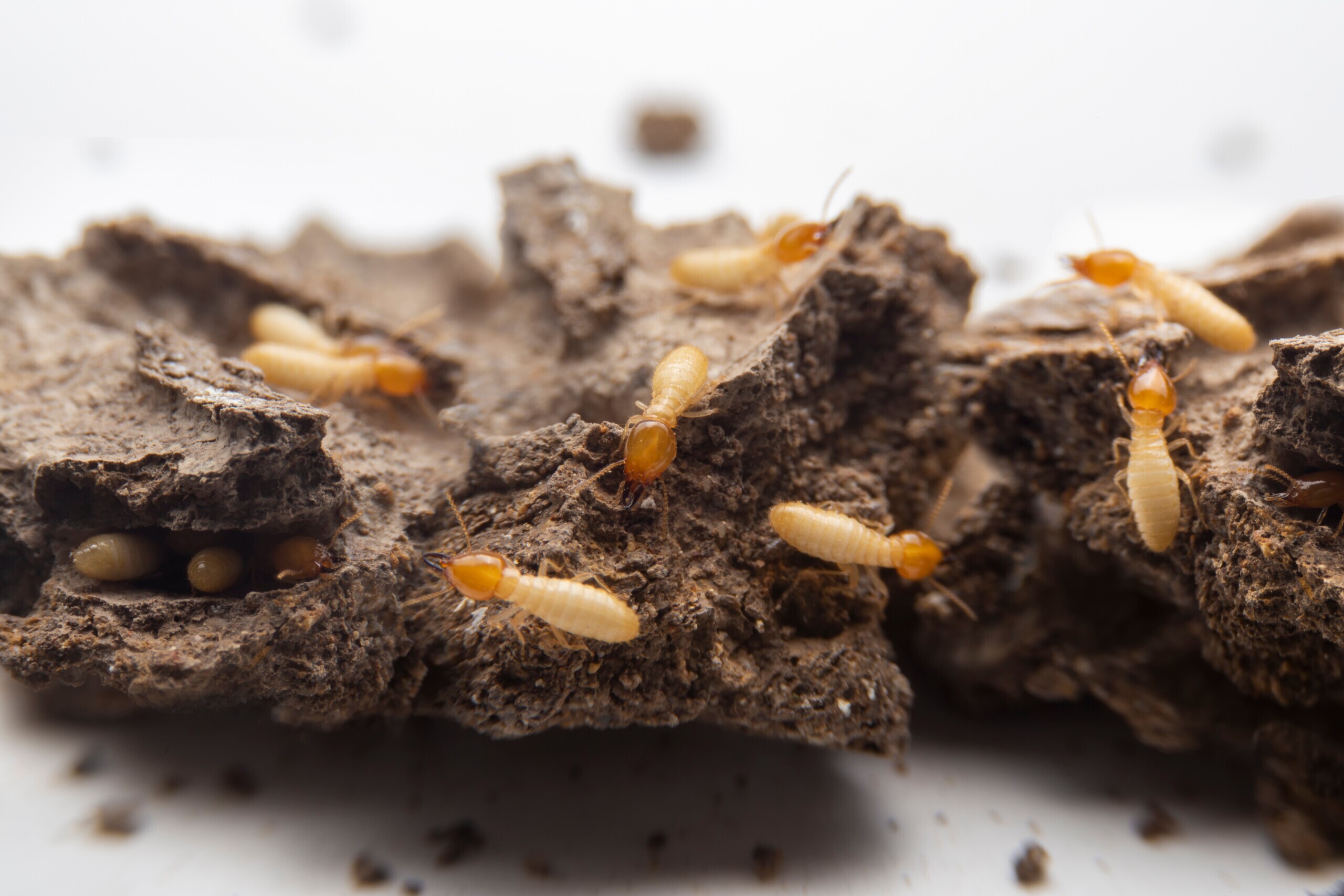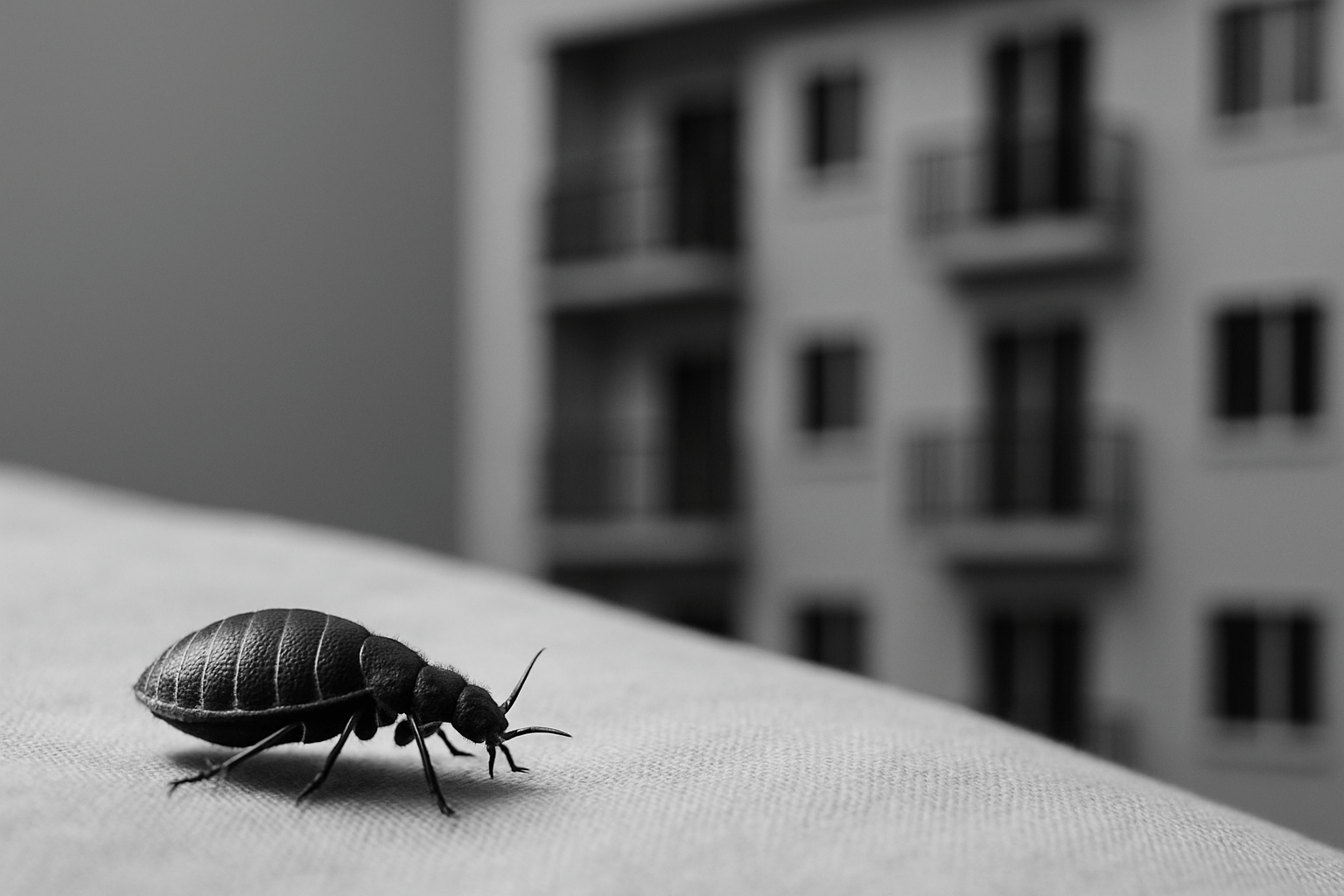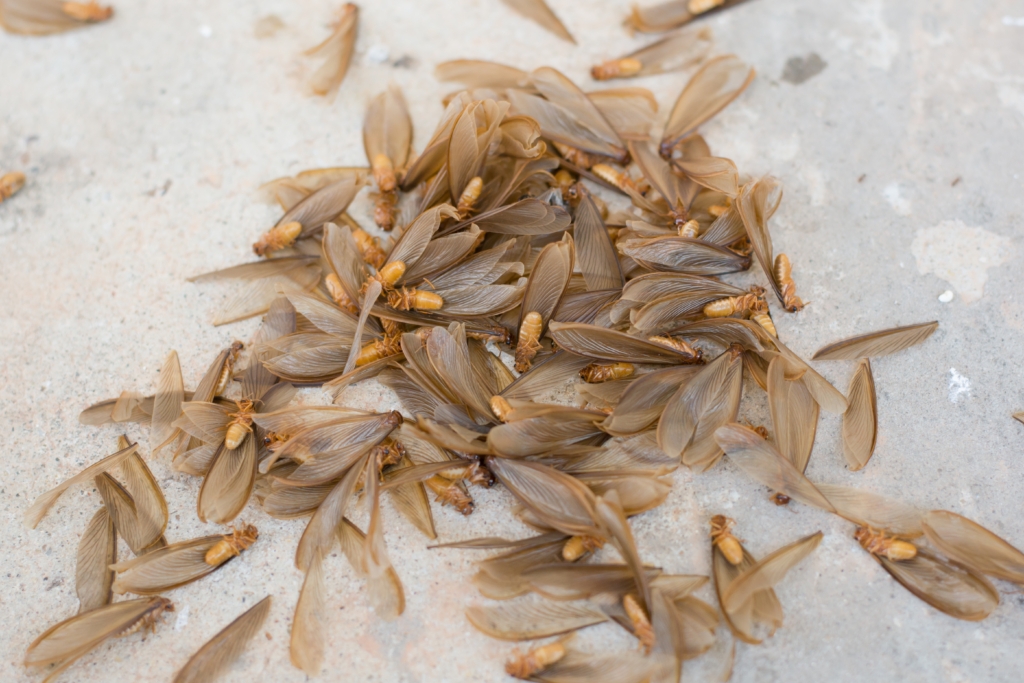
Introduction
Compared to everyday insects we encounter in our homes or workplaces like cockroaches and ants, termites are a far less common and more enigmatic adversary. Their habits and signs of infestation can be hard to decipher unless one has specialized training in this area. Symptoms of an early termite infestation can be subtle and easily overlooked. These tiny creatures, particularly the reproductive adults or “swarmers”, are adept invaders that can cause significant damage to homes and other structures. This series of article will delve into the world of these pests, helping you identify them and understand their habits and potential impact.
What are These Black, Winged Insects?
Adult reproductive termites, commonly known as “swarmers”, are dark-brown to black insects measuring about 3/8 inch long. Their primary role is to mate and establish new colonies, ensuring the survival and expansion of their species. Swarmers may or may not retain their wings as they often shed them shortly after their nuptial flight.
These swarming termites can be mistaken for ants due to their size and winged appearance. However, two distinct characteristics set them apart. Unlike ants, termites do not have the “pinched” waist typically seen in ant species. Moreover, termite wings are equal in length, unlike ants, which have distinctly longer front wings.
While termite swarmers can occasionally enter homes through open doors or windows, their presence indoors usually signals a significant infestation. Swarms can occur at any time, but in Dubai, they are most commonly observed between March and May, when the weather starts to warm up.
The Significance of Termite Swarmers
Finding termite swarmers in your home can be alarming. These insects are a clear sign of a mature termite colony nearby, often within the structure of the house itself. The presence of swarmers indicates that a colony has grown so large that it has produced reproductive termites to venture out and establish new colonies.
Termite swarmers are attracted to light and are often found near windows, doors, vents, and light fixtures. If you see piles of discarded wings near these areas, this is a definite sign of a termite swarm.
The Damage They Can Cause
Termites, including swarmers, feed on cellulose, a component found in wood and other plant materials. In their natural environment, they play a crucial role in breaking down dead trees and vegetation. However, within a home or building, this behaviour can lead to significant structural damage.
By the time swarmers are spotted, the hidden parts of your property may already have been infested and damaged for years. Termites work quietly and efficiently, eating away at the inside of wooden structures and leaving behind a thin veneer that can easily crumble under pressure.
What to Do When You Spot Them
If you find termite swarmers in your home, it’s essential to contact a professional pest control company immediately. While it might be tempting to attempt to resolve the issue yourself, termites are challenging pests that require professional attention.
A pest control professional can perform a thorough inspection of your property, identify the extent of the infestation, and recommend an effective treatment plan. Various treatment options are available, from bait systems to fumigation, depending on the severity of the infestation and the specific species of insects involved.
Conclusion
Encountering swarmers in your home can be unsettling, but understanding what they signify is the first step towards resolving the issue. In a bustling city like Dubai, where architectural integrity is paramount, maintaining vigilance against these silent destroyers is crucial. Remember, professional pest control services are your best ally in effectively dealing with termite, and other insects, problems.



